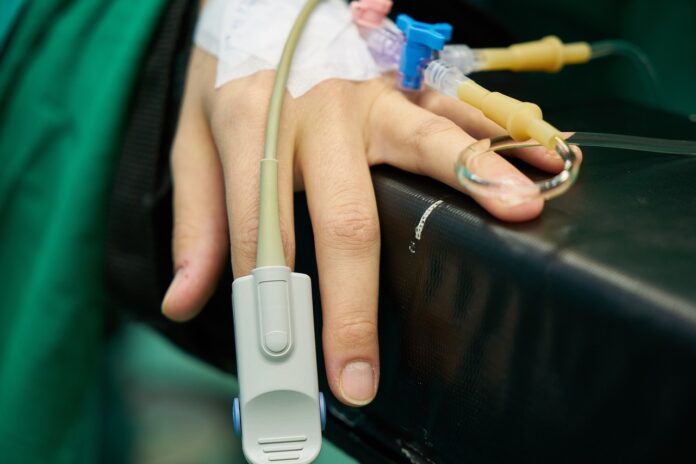UPDATE, 2/21 @ 4:30 p.m.: The story was updated to clarify the meeting was run by Muskoka Algonquin Healthcare’s Credentialed Staff Association.
During a meeting between Muskoka Algonquin Healthcare’s (MAHC) Credentialed Staff Association (CSA) and credentialed staff, an alternate proposal to MAHC’s “Made-in-Muskoka healthcare system” was brought up.
According to MAHC’s website, the CSA “represents the interests of the credentialed staff at our organization” adding it’s “not a physician’s union and cannot support individual grievances however is the voice of the professional staff to the hospital on important matters.”
The “Care Close to Home” proposal was created and endorsed by 47 physicians and Gravenhurst’s Cottage Country Family Health Team.
Dr. Scott Whynot, who practices at the Bracebridge Medical Arts Centre, believes their model better supports patient care while MAHC’s proposal may “make more sense financially.”
“Now we have to work together to make a model that seeks both patient care and financial improvements,” he says.
Whynot explains the proposal was released publically Tuesday ahead of the meeting.
In a statement to the MyMuskokaNow.com newsroom, Alasdair Smith, vice president of corporate services and chief financial officer says they haven’t received the proposal yet.
“Muskoka Algonquin Healthcare has obtained a copy of the South Muskoka physicians’ redevelopment proposal from social media,” writes Smith. “We have not yet had the opportunity to thoroughly review and discuss this with the physician group. We are looking forward to their formal submission to us, together with an opportunity to discuss the proposal as part of continued engagement with care providers to reach the best possible model of care for the future.”
During the meeting, he says the staff in attendance were split into groups and asked about the strengths and weaknesses of MAHC’s plan which “surprised” him, adding he expected to hear “something different.”
For their proposal, Whynot explains they were able to use publicly available population data but had to use estimates for things like transfers. He added they didn’t have any financial information. “What we tried to do was make a proposal that made functional sense for patient care and population data,” he says.
The physicians’’ plan would see 50 inpatient beds at the Huntsville District Memorial Hospital (HDMH), including 12 for stroke rehabilitation, and 90 beds with “slow stream rehabilitation” at the South Muskoka Memorial Hospital (SMMH) in Bracebridge.
Whynot says the rehabilitation focus for the beds at the SMMH will dedicate a certain number for patients like a senior who breaks their hip and needs to spend time in the hospital doing physiotherapy. “That’s been a consistent need in the community and that’s something we want to see continue happening,” he says.
HDMH would specialize in stroke care while SMMH would focus on broad inpatient services.
As with MAHC’s plan, both sites would have a 24/7 emergency department.
The proposal cites higher inpatient volume and population density in South Muskoka as the reason for the majority of the beds being placed at the Bracebridge site.
MAHC proposed its model in Jan. 2024.
Under it, there would be 139 inpatient beds at the Huntsville site and 18 in Bracebridge.
It would also have four level two intensive care unit (ICU) beds at SMMH and 10 level three ICU beds at the HDMH.
Whynot says their plan will feature seven level two ICU beds at both sites.
In Huntsville, he says the beds would support acute stroke treatment, which is a “low volume service” with less than 20 fibrinolytic treatments a year while the beds in Bracebridge would be for critical illness.
Whynot explains the difference between a level two and three ICU bed is the length of stay with the higher level provided an advanced level of care. “We think it’s not going to be completely necessary for our area,” he says of the level three ICU beds. According to Whynot, transfers rarely happen and the equipment required, such as for high-level cardiology intervention, would not be at either hospital anyway. He adds MAHC would need to recruit specialists, too, which “we don’t think is feasible.”
Also, as part of the physicians’ proposal, obstetrical care (childbirth) would not be moved to the Huntsville site like what’s proposed by MAHC. Whynot says the service needs to be delivered at both hospitals.
He explains the plan was mostly worked on by physicians in South Muskoka. “The Huntsville doctors weren’t as intimately involved with this though we were trying to gather their opinions on what they wanted to see,” he adds.
The physicians’ plan also reduces transfers since Whynot says “both sites have adequate inpatient services to support the local population.”
A transportation plan has yet to be detailed by MAHC with Melissa Bilodeau, director of nursing, clinical services, and chief nursing executive, saying during the Feb. 13 community chat in Bracebridge “we’re working on it.”
The report concludes by saying the next steps include consultant’s reports, including for site selection, being made public, analysis on costs to renovate or improve the current sites versus tearing them down, and “transparency and management” with the community and healthcare partners.
“If they want us to help come up with the best possible plan with the money we have we have to have information about how much things cost,” says Whynot.
The proposal by the physicians comes after many signed a letter earlier this month detailing why they’re against what MAHC is proposing.



